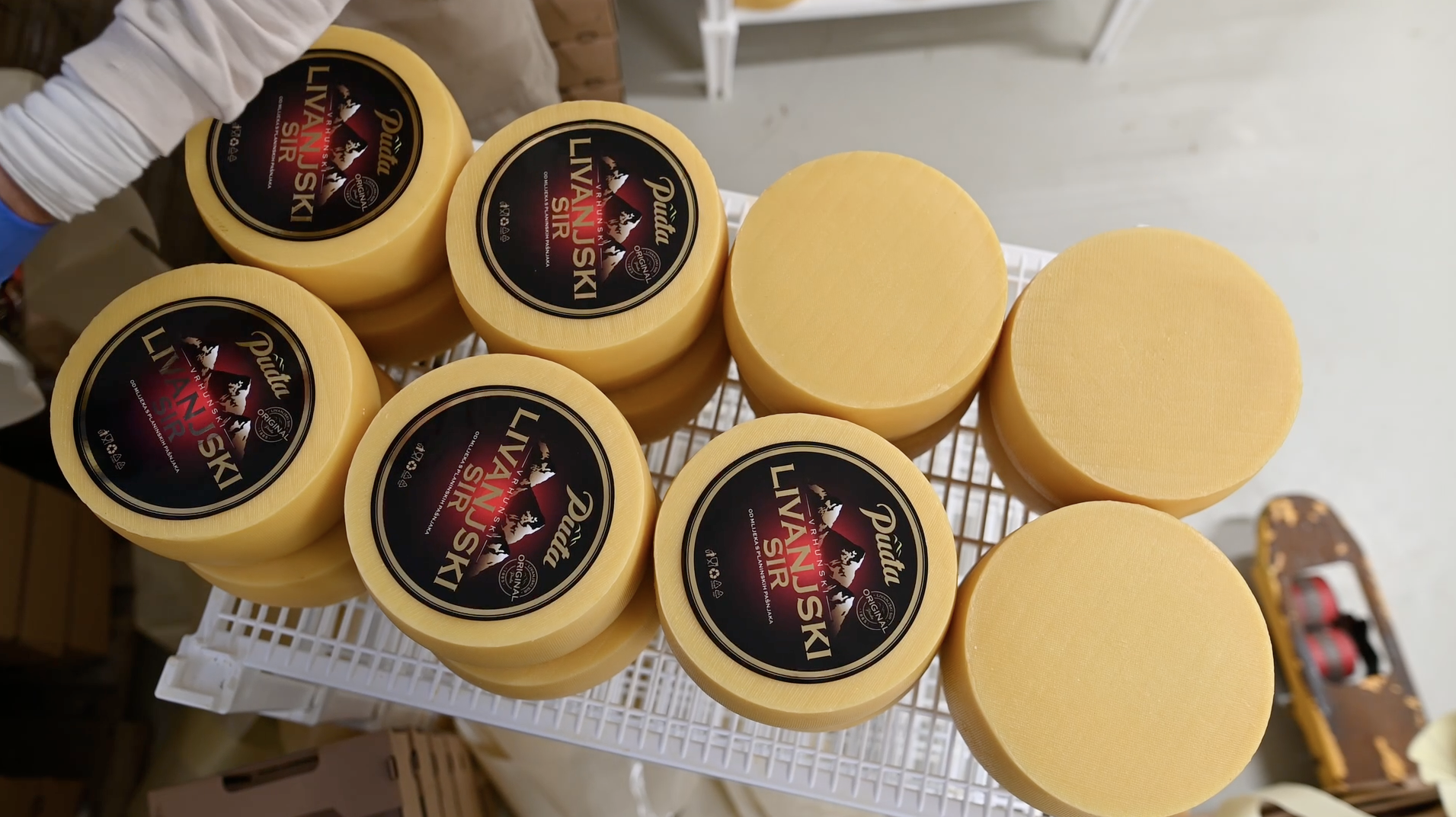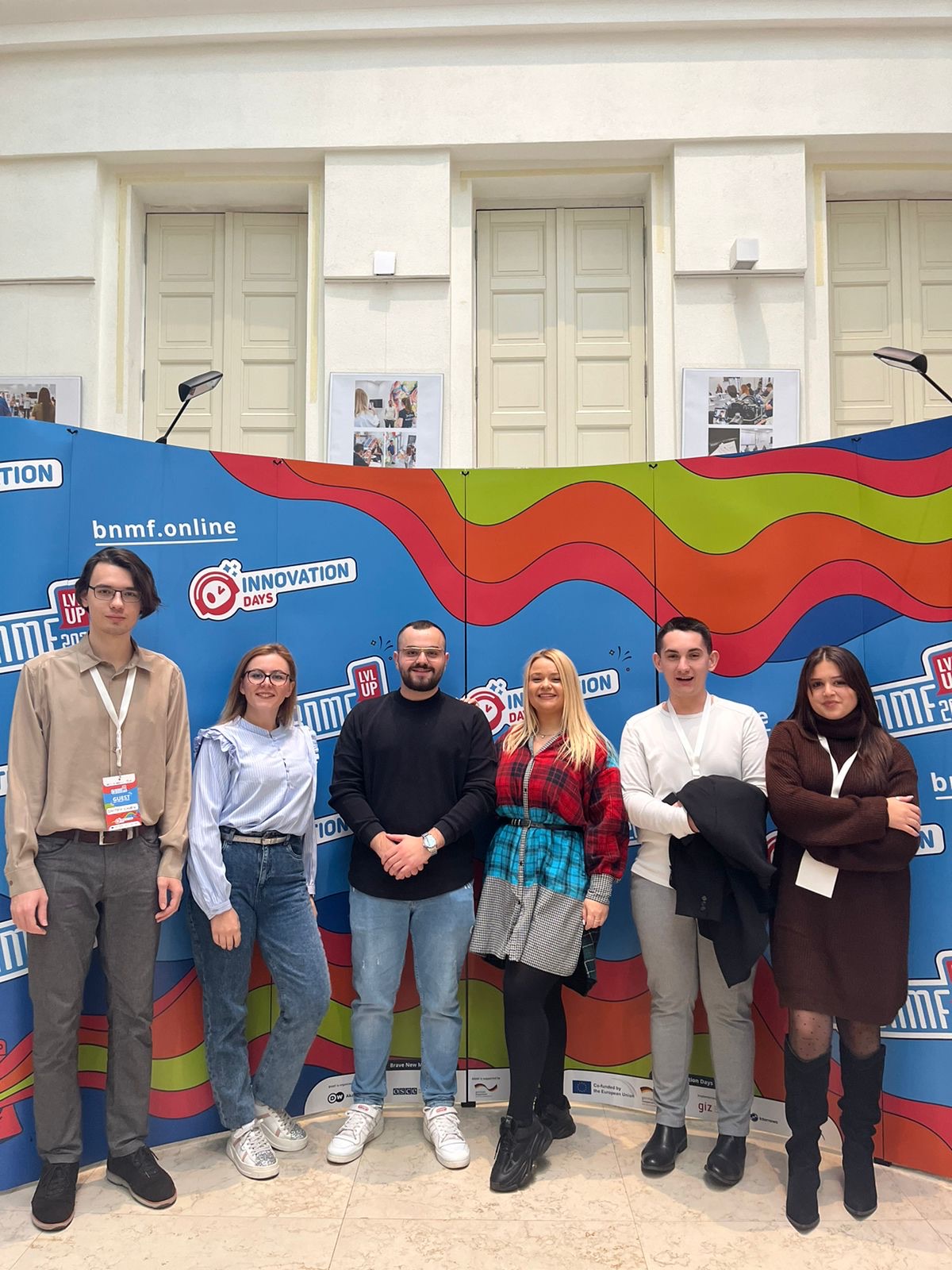What if architecture wasn’t just about buildings?
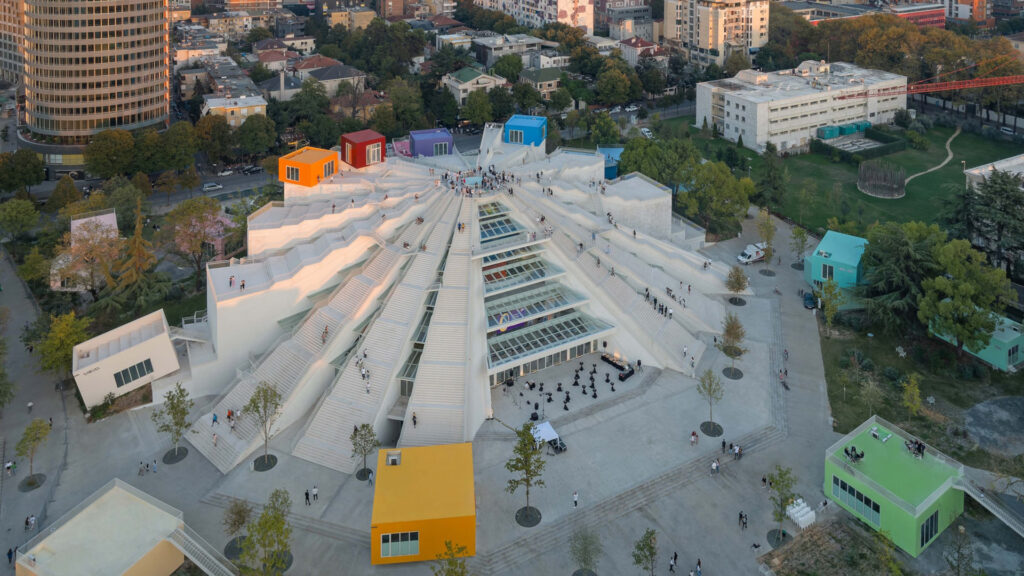
What if architecture wasn’t just about buildings?
By: Rixhers Dengo, Melisa Dorda, and Debora Kolgega
Ever wondered how architecture can go beyond just designing buildings and truly impact the way we live and interact? Or how the spaces we create today can shape the cities of tomorrow?
Let’s explore how we can make architecture that speaks to both the environment and the people it serves, and how we can be part of shaping cities that embrace innovation, responsibility, and inclusion.
Why architecture matters: Reflections from the SHARE Forum
This February, we walked into the SHARE International Architecture Forum in Albania
expecting to hear about buildings, concrete, glass, shapes, and beauty. But instead, we were met with a mix of ideas: tradition and digital futures, design and the need to address climate change. Held in the Pyramid of Tirana, an odd building itself, the forum brought together professionals and thinkers, raising more questions than it answered.
This is where things became interesting. One of the biggest takeaways from SHARE was how many people are rethinking architecture beyond just how it looks. We heard about new materials, reusing old buildings in new ways, sustainable housing, and designing for
everyone, real efforts to balance design with environmental and social responsibility.
There were inspiring examples: public projects that focused on community needs, restorations that respected local history while adding new ideas, and construction systems made to adjust to changing climates. Of course, some challenges were still present. While sustainable ideas were often discussed, their implementation sometimes felt basic or limited by things like tight budgets, slow policies, or market-focused views.
But this doesn’t erase the effort. It shows we're in a time of change, and SHARE helped us see both the progress made and the road ahead.
What inspired us at SHARE?
One of the most powerful insights was the idea of designing spaces that truly respond to the needs of the people who use them. Architects are increasingly focused on resilience,
integrating eco-friendly materials and nature into urban environments. Yet, there’s still much to consider about power, says Rixhers: “Who decides what’s sustainable, and who shapes the future”?
These questions brought us back to the core challenge of architecture, creating spaces that last and serve communities, while respecting both heritage and innovation.
Debora says that: “Being young and drawn by nothing but passion, such activities often raise the desire and optimism for new opportunities. So I saw this opportunity as an introduction to the result, to the beautiful side of this profession, where after the challenges and many steps during the design, not only in the professional aspect but also as individuals who live it daily in individual forms in the surrounding environment.”
Meanwhile, it is worth mentioning one of the speakers, Davide MACULLO, a prominent
architect with projects implemented in the Balkans who is known for the creative living
world that brings him closer to the environment by organically intertwining, during a coffee break where he quoted to us three as young architects: “The beginning will always be difficult everywhere, and it doesn't matter where you come from or who has paved your path before you, try every experience, never say no to a new challenge and give everything for what you believe in while you are young, ability and work comes with experience and are therefore acquired along the way.”
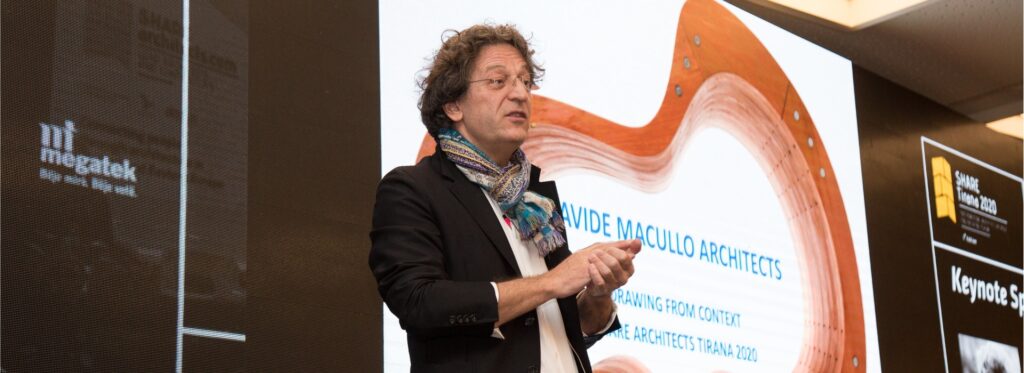
Why should YEAs even care?
As young European Ambassadors, we have a unique opportunity to shape the spaces we live in and the communities we build. Architecture is not just about professional designs made by experts in firms or city councils, it’s about the spaces we experience every day: the walk to the bus, the café we meet friends at, or even the way our apartment buildings feel. If we are serious about sustainability, community, and democracy, it’s time we start engaging with the environments that impact our lives. Architecture is a form of soft power; it can include or exclude without a single word, and it shapes how we participate in our communities.
This is why architecture is no longer just a creative profession, it’s a political responsibility. From addressing climate change, where buildings account for over 30% of global CO₂ emissions, to designing inclusive public spaces that foster freedom and resilience, architecture touches everything. It defines who feels safe, seen, and welcomed, and it plays a key role in shaping the identities of our communities. Young people must be at the forefront of creating environments that work for all, from those with different abilities to diverse backgrounds.
How do EU-funded projects benefit our communities?
One of the most exciting parts of being a YEA is the ability to connect what we learn in
professional spaces like SHARE to actual transformation on the ground. That’s why we
wanted to highlight a few incredible EU-funded architecture and urban development
projects in Albania and the region that prove how design and European values go hand in hand.
Vlora Waterfront Revitalisation (Albania)
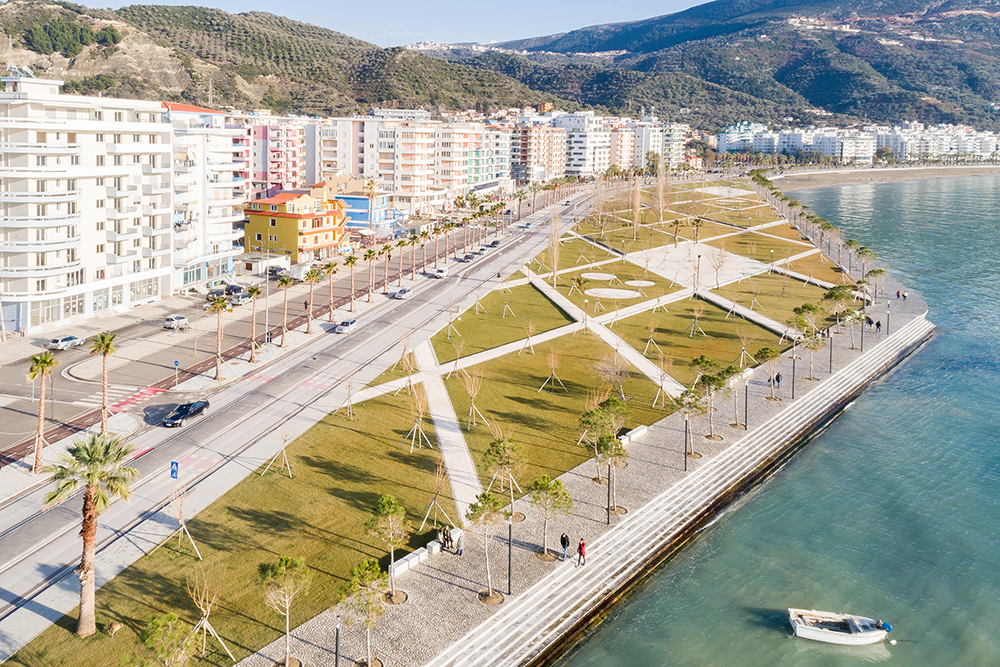
The Vlora Waterfront project really changed the way people experience the city. What used to be just a neglected stretch of coastline is now a lively, pedestrian-friendly thanks to EU funding and a collaboration with international architects. It’s become one of the few places in Albania with real, modern touristic infrastructure, and you can feel its impact.
Regeneration of the waterfront supports the current touristic boom in Albania as Vlora is
one of the few places where proper touristic infrastructures. Where local businesses are
thriving, young people finally have a public space to hang out in by the sea, and it’s now
much more accessible to everyone, not just tourists.
College of Europe, Tirana Campus – Building a space for young minds
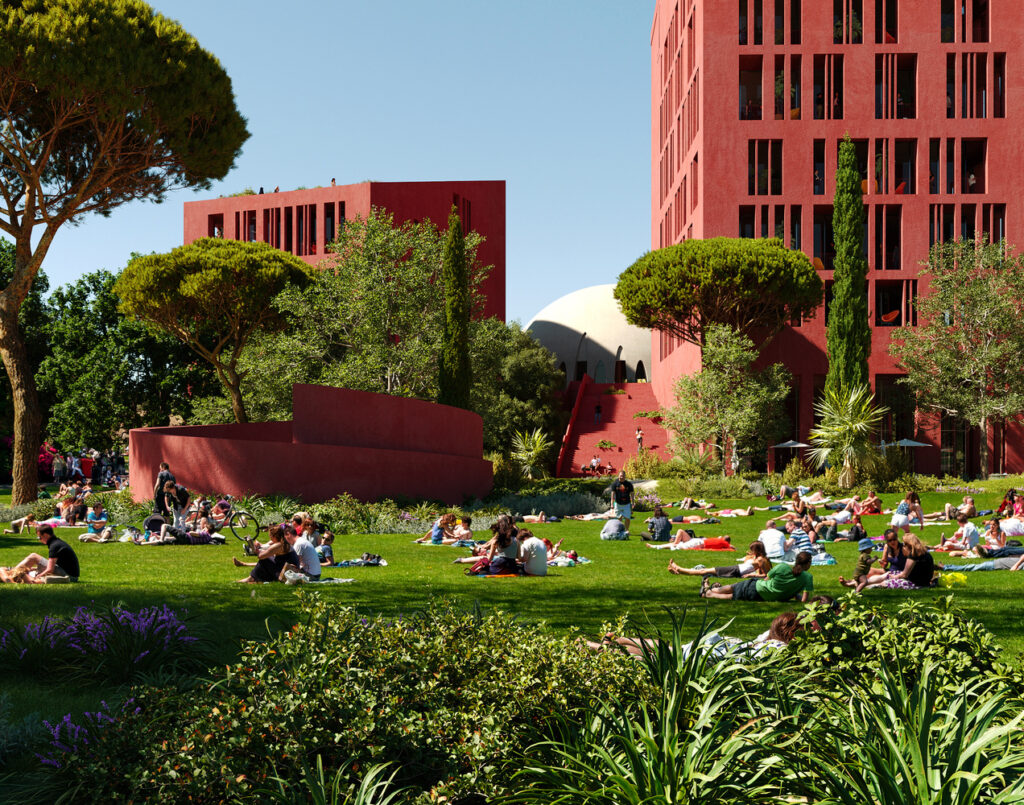
The new Tirana campus of the College of Europe isn’t just an academic expansion, it’s a
serious investment in the next generation of decision makers, especially young architects like us who are driven by values and vision. The design itself is modern and symbolic, but what’s even more powerful is what will happen inside those walls.
Future leaders will be shaped as people who won’t just study policies, but design them. Architects who won’t only build structures, but help shape sustainable, inclusive cities grounded in European principles like democracy, accessibility, and innovation. This campus will be a meeting point where ideas become actions, and where the built environment meets policymaking.
European Heritage Hub grants
Funded under the EU’s Creative Europe programme, the European Heritage Hub supports the preservation and creative reuse of cultural heritage across Europe, including the Western Balkans.
In Albania, sites like Gjirokastra and Berat, both UNESCO-listed and have benefited from EU-supported cultural revitalization programs. You can actually feel the difference when you walk through those cities now. Historic buildings are being restored, not
just to preserve the past but to create spaces where people, especially young people, can
gather, celebrate culture, and share stories. The European Heritage Hub, which is an EUfunded pilot project, is playing a big role in this initiative.
Practical ways for YEAs to engage in architecture
Rather than just offering calls to action, we present practical ways for youth to engage with architecture. One option is Design Advocacy Labs, where youth-led groups explore local issues like abandoned spaces or informal settlements and co-design small-scale
interventions.
Another idea is Architecture Walks with Local Elders, which gather oral stories tied to buildings to preserve unofficial memories of the past. We can also embrace Critique-
as-Practice by creating visual campaigns to question public projects through photography, collage, or AR filters.
Cross border exchanges offer an opportunity to pair young creatives from different Balkan cities to reinterpret EU-funded projects, asking, “What would you do
differently?”
Open Source Design is another avenue, where collaborations with universities
and design collectives could result in publishing open blueprints for adaptable public
furniture, mobile stages, or shelters. Architecture needs new formats, not just new facades.
Attending the SHARE Forum as Young European Ambassadors reinforced our belief that architecture should be at the heart of our conversations, campaigns, and actions.
Conclusion
The SHARE Forum reminded us that architecture is more than just walls and windows, it’s about values like sustainability, inclusion, creativity, and community. As Young European Ambassadors (YEAs), we understand that architecture is a powerful tool for shaping better societies, not just physically, but socially, emotionally, and environmentally.
The Forum sparked a shared belief that we, as the next generation, have a role in transforming the spaces we inhabit, from activism to design, storytelling, or simply asking the right questions. Whether through youth-led design workshops, supporting inclusive spaces, or participating in EU-funded projects, we can shape a future that includes everyone.

